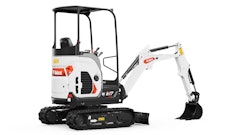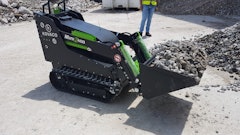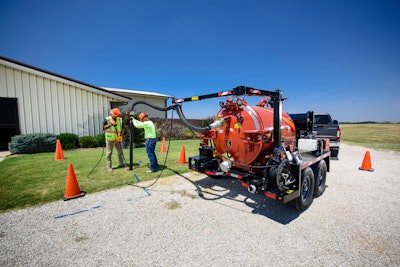
Today’s jobsites are rarely simple, especially in residential areas. Above ground, they are filled with fences, sheds, existing landscaping, gardens, trees, doghouses and other potential hazards. And below ground, they are congested with existing utilities that operators must avoid striking. Not to mention, landscapers are faced with numerous varying ground conditions on every jobsite. These challenging environments have resulted in green industry professionals looking for equipment that can help navigate increasingly complicated environments. A popular machine they are turning toward to help are vacuum excavators.
Vacuum excavators are some of the most versatile machines on the market for construction and utility work. Landscapers can use vacuum excavators to expose utilities before working in sensitive areas and they’re ideal for tight work areas where traditional equipment won’t fit. The easily maneuverable wand of vacuum excavators provides the flexibility to excavate in places other equipment may be unable to reach. Additionally, vacuum excavators help to mitigate damage because they are less invasive, relying on pressurized water or air, rather than making an open cut.
With so many equipment options for today’s green industry professionals, here are a few reasons why green industry professionals should consider a vacuum excavator for every jobsite.
1. Damage mitigation
A vacuum excavator relies on pressurized water or air to expose utilities or dig a trench. Because of this, vacuum excavators are a desirable choice for landscapers working in congested underground environments, as they can efficiently and safely expose existing utilities, helping to reduce the risk of utility strikes.
Additionally, vacuum excavators can be used to help landscapers create a trench in sensitive areas. For example, a landscaper wanting to install an irrigation system underneath a garden can use a vacuum excavator to dig a trench around existing plants and flowers, reducing the time, money and resources needed to fix any disturbance to existing landscaping.
2. Increased flexibility
Historically, vacuum excavators have been used on HDD jobsites to expose existing underground utilities and for jobsite cleanup, but today they are helping landscapers excavate near sensitive areas and in areas where traditional methods are unable to get the job done.
For example, trenching near a structure like a house, shed or fence can be challenging because of the machine’s size, and starting or finishing a trench against one of these existing structures can be particularly difficult. This is where vacuum excavators become a handy tool. In locations where trenchers can’t reach, landscapers can use their vacuum excavator to open the trench.
Furthermore, on jobsites with space restrictions, landscapers can park their vacuum excavator up to 100 feet away from the trench location and reach the site with their vacuum excavator wand, which is smaller and more flexible than a trencher and can easily maneuver in these tighter areas. This flexibility simplifies the trenching task for operators and also helps prevent any accidental damages to existing structures.
3. Ground condition versatility
There are five main ground conditions that vacuum excavator operators may deal with on a job: rock, sandstone, clay, topsoil and sand. Green industry professionals can easily encounter more than one of these conditions on a single jobsite. In these situations, a vacuum excavator allows landscapers to switch between air or hydro excavation depending on the ground condition and delicacy of the surrounding environment.
Rock and sandstone are two of the most difficult soil types to excavate, and as a result, they take the most time. Operators facing rocky or sandstone conditions should always use hydro excavation with hot water because it more effectively cuts through the difficult soil. Clay is more easily excavated than rock and sandstone, which opens up a few options for contractors facing these conditions. Clay conditions can be excavated with hydro excavation or air excavation. Hydro excavation is typically the more efficient excavation method, but air excavation has its place. As with clay, hydro excavation is usually the more efficient option with topsoil and sand; however, due to the sensitivity of sand in particular, air excavation offers a more accurate option.
The versatility of a vacuum excavator allows teams to adjust to whatever ground conditions are present, while completing the job with minimal damage and disruption to surrounding utilities and environments.
4. Specialized tasks
In addition to exposing utilities or finishing a trench, a vacuum excavator can help landscapers with more specialized or niche tasks. Need to clean out a manhole cover? How about a sand bunker on a golf course? Vacuum excavators can remove and clear out dirt, mulch and other debris without the worry of damage. For example, landscapers can use the suction tool of the excavator to remove and clear out old mulch and debris from a flower mulch bed without the worry of damaging homeowners’ flowers, grass or well-cultivated vegetation.
Additionally, vacuum excavators can be used for tree installation and growth stimulation. Whether installing a young 5-foot tree or maintaining a mature 20-foot tree, vacuum excavators can help loosen up the soil to create a more stable root foundation and encourage proper root growout. This can help landscapers and arborists save on time and labor and can reduce surface disruption in the excavation process.

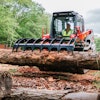




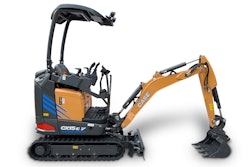
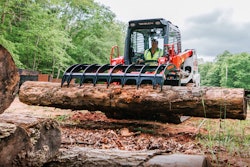

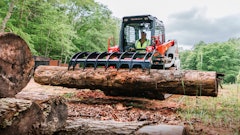






![Doosan Bobcat Wacker Neuson Stack 2ec Js Pb V6e[1]](https://img.greenindustrypros.com/mindful/acbm/workspaces/default/uploads/2025/12/doosan-bobcat-wacker-neuson-stack2ecjspbv6e1.CPyyz8ubHn.png?ar=16%3A9&auto=format%2Ccompress&bg=fff&fill-color=fff&fit=fill&h=135&q=70&w=240)


